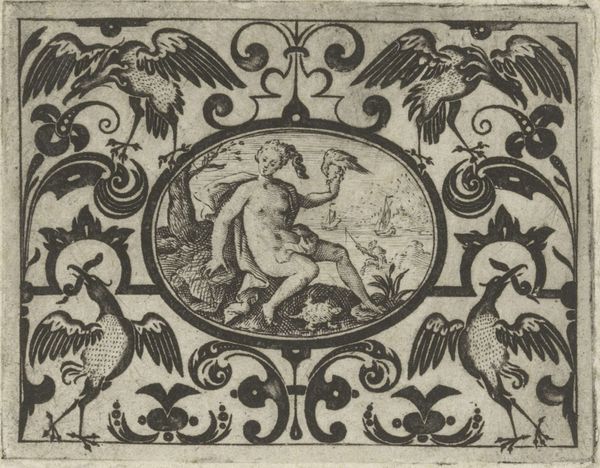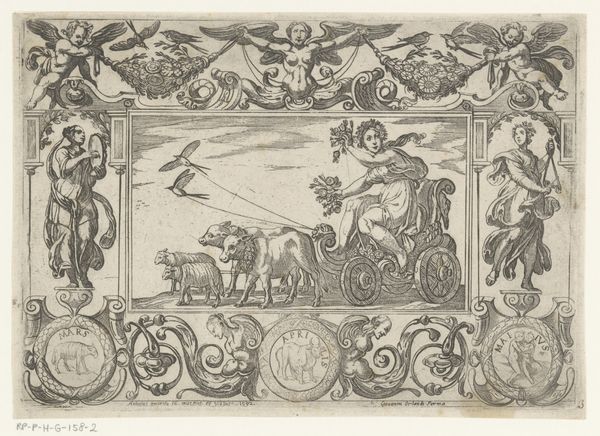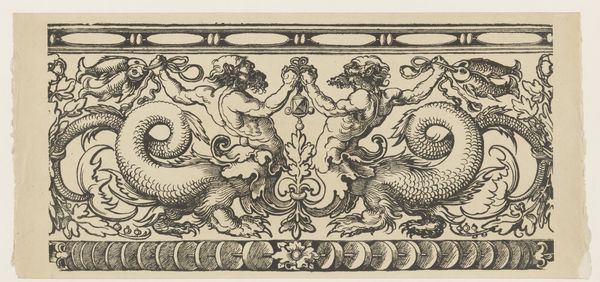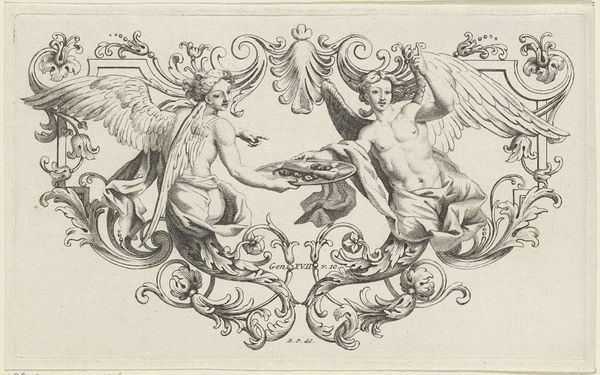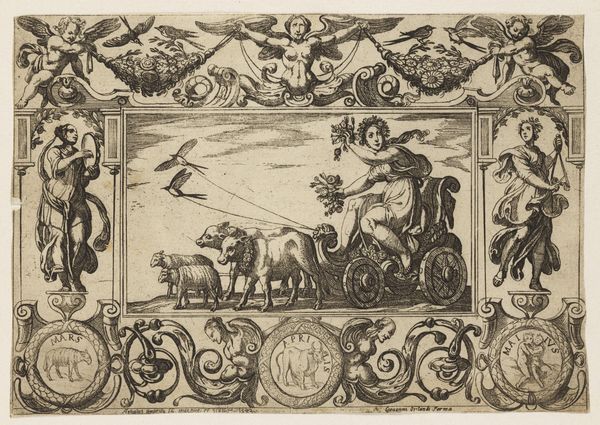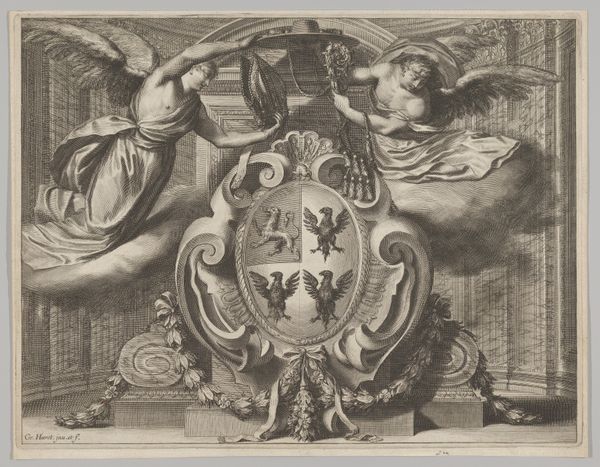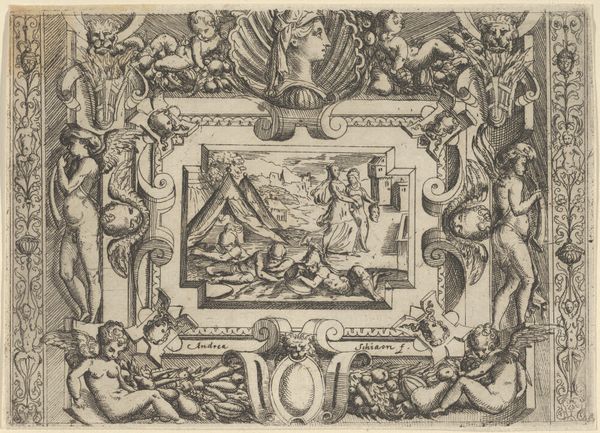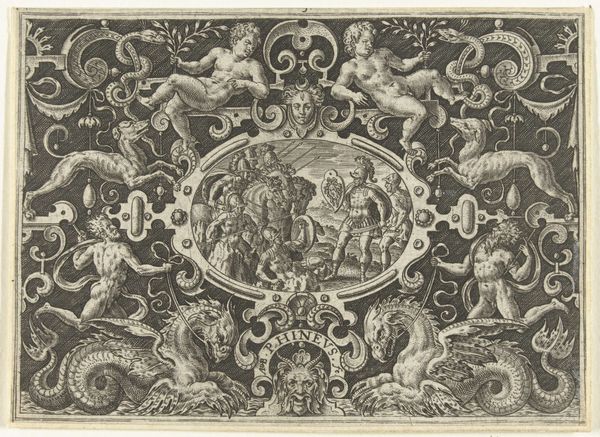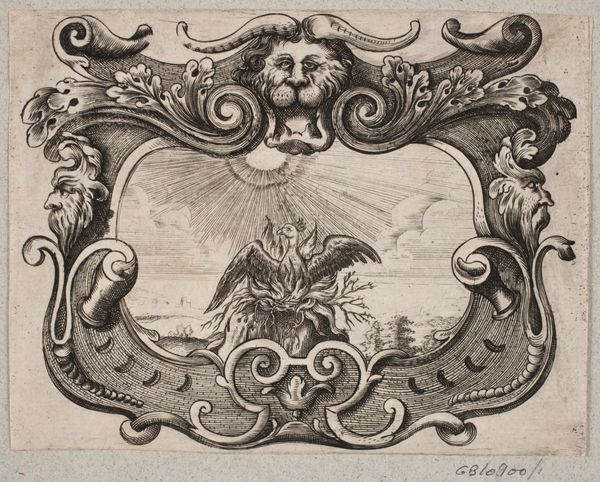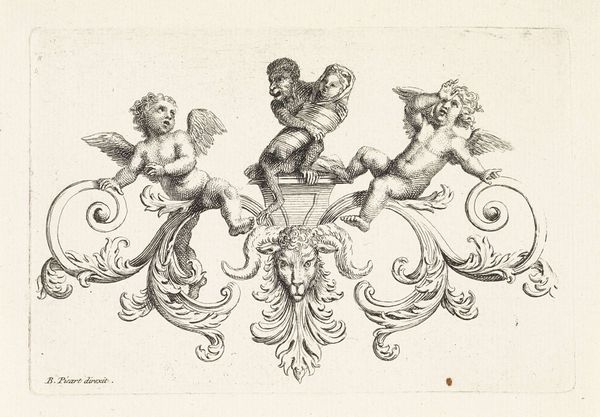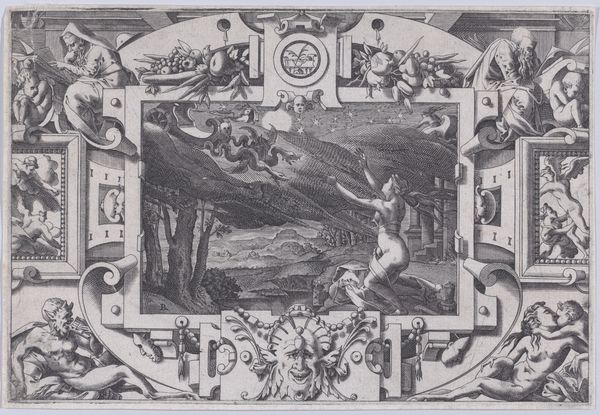
ornament, print, engraving
#
ornament
#
pen drawing
# print
#
figuration
#
11_renaissance
#
history-painting
#
northern-renaissance
#
engraving
Dimensions: sheet (trimmed to plate mark): 7.8 x 11.8 cm (3 1/16 x 4 5/8 in.)
Copyright: National Gallery of Art: CC0 1.0
Curator: Immediately, I am struck by its meticulous detail. It's unsettling and ornate all at once. Editor: Yes, it's a complex piece. This is “Ornament with Two Sphinxes and a Winged Man,” an engraving made in 1528 by Lucas van Leyden, a pivotal figure in the Northern Renaissance. It showcases his skills as both a printmaker and a designer of ornament. Curator: Ornament is the key word here, isn't it? The linear precision is remarkable. You see how each flourish leads to another. It suggests luxury objects, doesn't it? A noble context or the trappings of a humanist library. Editor: Exactly! It’s crucial to understand prints as commodities within a developing market for images at the time. Leyden's prints circulated widely, impacting decorative vocabularies and influencing the work of goldsmiths, carvers and other artisans who then disseminated that influence wider. This wasn’t “high art” yet; it was about crafting designs for everyday objects of consumption. Curator: And what do we make of these hybrid creatures then? The formal symmetry is so balanced, a testament to the composition. Each mirroring the other. Do you find them more grotesque or graceful? Editor: Well, the hybridity would’ve spoken to broader anxieties of the time. The winged man and the sphinxes weren’t just aesthetic flourishes but carriers of humanist learning—references to antiquity meant to elevate craft towards the realm of intellectual activity. Van Leyden has put knowledge on display! The materiality is of utter importance here. Curator: That's very true. Looking again, I'm struck how, for all their strangeness, they reflect a search for order and refinement amid a rapidly changing world. Editor: Precisely! A visual representation, mass-produced and widely circulated of a society grappling with transformation on every level, where an engraving isn't just an image, but a marker of labor, skill, and social aspiration. Curator: Well, considering Leyden's impact on the visual landscape of the Renaissance, this print encapsulates the period's aesthetic ambitions. Editor: It surely does! I come away again impressed by his output considered from both material means and historical forces, seeing its influence rippling outward.
Comments
No comments
Be the first to comment and join the conversation on the ultimate creative platform.

